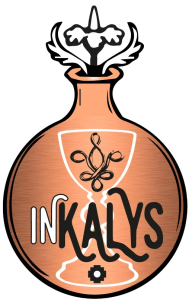Gaultheria or "Wintergreen" in English is a 10-15cm evergreen shrub native to the forests of North America, Canada, Nepal, and China. It is a highly aromatic plant traditionally used by natives in the form of poultices and infusions to relieve pain of all kinds, especially joint and muscle injuries, rheumatism, and headaches.
Composition of the essential oil
The essential oil of Gaultheria is very particular because its majority compound makes up almost all of its content. Specifically, 97% to 99% of its composition is methyl salicylate. In general, the majority compound of an essential oil represents between 30 and 70% of its content, thus allowing for the presence of several other minority compounds. There are very few plants that offer an essential oil with such a dominant majority compound; besides Gaultheria we can cite Birch (Betula alba) which also contains high levels of methyl salicylate and Ho Wood (Cinnamomum camphora ct. linalol) which is composed of 98% linalol.
Methyl salicylate
To understand the therapeutic potential of Gaultheria, we must inevitably be interested in methyl salicylate. This compound is an ester of the famous "salicylic acid" present in the leaves of White Willow (Salix alba). Salicylic acid, in turn, is the main ingredient used in the synthesis of "Aspirin" (acetylsalicylic acid). We can say that methyl salicylate has pharmacological properties almost identical to those of Aspirin because both, when absorbed, are metabolized into salicylic acid in the body. Methyl salicylate, after absorption in the body, undergoes hydrolysis before transforming into salicylic acid.
How to use Gaultheria essential oil
The most convenient way to use Gaultheria essential oil is topically, as a natural pain reliever. It is recommended to dilute it in a carrier oil at a concentration that can vary between 2% and 10% depending on the needs, to perform therapeutic massages. It is possible to use slightly higher concentrations for local pains as long as we control the amount administered well so as not to exceed the recommended dose. As a point of comparison, a 5ml bottle of Gaultheria essential oil contains the equivalent of approximately 21 regular strength aspirin for adults. This means that the application of 5 to 7 drops of essential oil is equivalent to one aspirin. The advantage of topical application is that the pain-relieving effect will be more localized, however, a good part of the methyl salicylate will be absorbed into the bloodstream and will act systemically, which is why the doses must be controlled with caution and the contraindications respected.
Cautions and contraindications:
Please translate this paragraph into English. Like aspirin, the essential oil of Gaulteria has an antipyretic and blood-thinning effect. For this reason, it should not be used in conjunction with aspirin, warfarin, and other anticoagulants. Its blood-thinning effect can cause hypotension in high doses. The metabolism and excretion of salicylic acid mainly depend on the liver and kidneys, so its use is not recommended in people whose functions of these organs are compromised. Essential oil should not be used during pregnancy because the active ingredients easily cross the placental barrier. Similarly, its use is not recommended in children under 5 years old or during breastfeeding. Only topical use of Gaulteria essential oil, diluted in a carrier oil, is recommended in doses equivalent to 2-5 pure drops per application. A first test in the elbow crease is recommended to rule out any skin reactions before applying to larger areas of the body. The ingestion and prolonged use of Gaulteria essential oil is not recommended.

